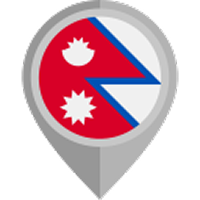Nepal vision | 16/09/2024
When it comes to trekking in Nepal, you might have heard about the famous Everest Base Camp, Annapurna Base Camp, and many more. But the Himalayan country of Nepal is blessed with some unexplored gems in the arms of the Himalayas. These are also known to be the less crowded trek or off-beaten trek in Nepal.
These trails are worth a visit. They offer an exclusive glimpse of the region's cultural delights, scenic views, and natural wonders. So be ready to get a short glimpse of the best off-beaten treks in Nepal.
Which Nepal treks are off the beaten path?
Nepal is blessed with some of the world’s tallest mountain ranges. Along the trail lie the local people, who have been inhabiting the place for centuries. They have adorned the region with their cultural artifacts, and the natural wonders just enhance the charm of the places.
Based on the trail that still needs to explore these hidden gems, we have curated a list of seven off-beaten treks in Nepal that are among our favorites.
Upper Dolpo Trek

When we start to talk about the off-beaten path, the first thing that comes to mind is the beautiful region of the upper Dolpo hidden in the arms of the Dhaulagiri ranges. You walk through rugged terrain and high passes and reach a height above 5000m. The highlight of the trek is the deepest lake in the world, Shey Phoksundo Lake. Alongside the lake, there is the home to some of the monasteries, like Shey Gompa, that can immerse you in a peaceful environment.
- You get to experience the ancient and preserved form of Tibetan Buddhism and Bon culture. The ancient monasteries and manuscripts highlight their customs.
- On the trail to the upper Dolpo, you pass through the Shey Phoksundo National Park. This park is home to a variety of flora and fauna, including the elusive snow leopard and herds of blue sheep.
- During your trek, you will pass through multiple high passes above 5,000 meters. The rewards are stunning views of the river valleys and majestic peaks.
- The best part when you walking through the trail of upper Dolpo is the charming villages decorated with encrypted mani walls, knees, and flying shorts that show their local culture.
Upper Mustang Trek

Yet another Himalayan wonder that shows the diverse desert-like landscape is the upper Mustang trek. They are located in the heart of the Annapurna region, and they show their ancient Tibetan monastery, caves, and traditional villages.
The trek's highlight is the ancient capital of Lo Manthang, where trekkers can explore cultural artifacts.
- When you walk through the trails of the upper Mustang, the first thing you see is the Tibetan architecture and rich cultural heritage.
- Along your trek, you can immerse yourself in their unique Tibetan culture through traditional villages, ancient monasteries, and local customs, including the Tiji, Dumje, and many festivals according to the season. If you want to experience the festival, then contact Nepal Vision Trek for advance booking.
- The highlights are monasteries like Jampa Gompa, Thubchen Gompa, and Chodey Gompa, which show Tibetan Buddhist art.
- Wander through the high-altitude desert landscapes, which are brown and grey in hue and dotted with mud-brick houses and prayer flags.
Nar Phu Trek

Nar Phu Valley is a newly opened off-beaten trek that gives a short escape to ancient times through the valleys of Nar and Phu. The trail further enhances its charm by displaying majestic white views of Annapurna II, Himlung, Chlung, and Nadi Himal.
The villages of Phu, with their unique and ancient architectural buildings, can take you back in time and showcase their beauty. The Nar villages also give a glimpse of the Tibetan culture of the 4th and 5th centuries. The people of these regions have preserved their culture, and it is yet to be explored.
As you walk through the rocky terrain, you get the chance to immerse yourself in the rich Tiebetan culture through traditional villages.
- Cross the Kang La Pass (5,320m) and give the panoramic views of the Annapurna range.
- Explore the remote villages of Nar and Phu villages, inhabited by the Khampas (Tibetan refugees).
- The diverse landscapes as it transitions from the lush green valleys to rugged terrain make it eye-catching.
- The exotic experience of staying in the monastery of Tashi Lhakhang Gompa, where you get to experience the first-hand culture and customs of Tibetan people.
Tsum Valley Trek

Many of us have heard about the Manaslu Circuit trek, and it has been gaining some popularity.
But the Tsum Valley Trek is something new and exciting for trekkers. The best part is that it is less challenging than Manaslu and offers a diverse range of trekking experiences in its three-week duration.
It is hard until you reach the Chukung, but after that, you are taken aback by the architecture and cultural charm of the villages. It is like a short journey to the heavens, located in the arms of the Manalsu and Ganesh ranges.
- The first comes the experience of the unique customs and traditions of the Tibetan Buddhist community.
- Wander through lush forests, rolling hills, and high mountain passes, and the Ganesh Himal, Manaslu Sringi Himal, and Boudha Himal ranges will be your partners.
- Take time to visit cultural landmarks such as Milarepa's Cave and prominent monasteries like Mu Gompa and Rachen Gompa. These can give you quite an insight into their spiritual significance.
- Look for diverse wildlife, including Himalayan black bears, blue sheep, and various bird species, in their natural habitats.
Kanchenjunga Base Camp Trek

Kanchenjunga Base Camp Trek is one of Nepal's best unexplored gems. It takes you through the world's third tallest peak, lush forests, rugged terrain, and the majestic presence of Everest, Lhotse, Makalu, Peak 2, and many more.
It is not just the views of the cultural wonder of Rai and Limbu in the lower and upper regions inhabited by the Sherpa people. All these people show off their cultural diversity, making your trekking journey even more appealing.
- Aside from the majestic views, there is the interaction of friendly local communities of Limbu and Rai people.
- After a challenging trek through less-traveled paths, you will reward yourself with a peaceful environment and views of stunning peaks.
- Explore historic monasteries like Ghunsa Monastery and the sacred sites that reflect the region's deep Buddhist roots.
Permit Requirement of Less Crowded Trek
Off-the-beaten-path treks also less crowded trek are classified as protected areas by the government. To trek these routes, you need a special permit, which costs more than the regular permits.
The permit costs for the given treks are:
- Kanchenjunga Permit: $20 for seven days
- Manaslu & Tsum Valley:
- September to November: $40
- December to August: $30
- Upper Mustang: $500 for seven days
- Upper Dolpo: $20 for seven days
- Nar Phu Trek:
- September to November: $100
- December to August: $75
What to Expect on Less Crowded Treks ?
When you take part in those off-the-beaten treks, there are some things you need to be ready for to help make your trekking more efficient and appealing.
- The trek consists of challenging durations that can last two or more weeks, so be prepared for those physical challenges.
- Since the trails are remote, you can expect fewer amenities and infrastructure.
- A basic teahouse with two shared rooms and a bathroom is considered a luxury in these places.
- In some areas, camping can also be the primary accommodation option in remote regions.
- The best way to ease your load is to get help from a porter to carry your luggage. A porter can carry up to 20kg of luggage, which should be sufficient for you.
- It is best to trek these places in the optimal seasons like spring and autumn to get the best experience of the region.
- In some cases, there are unpredictable weather patterns due to the remote nature of the treks.
- Adhere to the regulations and guidelines set by the government and local authorities.
To wrap up, the off-beaten trek is one of the best ways to experience Nepal's remoteness and cultural richness. You have to prepare accordingly before embarking on the journey. It is best to get a professional tour operator involved in your trek planning. For any advice and guidelines, feel free to contact Nepal Vision Trek.
FAQS









